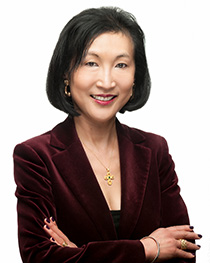
Photo Credit: southeastdiscovery.com
I was both frustrated and pleased to read the article Older Consumers Will Reshape The Business Landscape in the April 9th edition of The Economist. I was pleased because I was flattered that an esteemed publication like The Economist shares pretty much the same insights as mine some nine years ago when I first started this blog. In 2007 on this blog’s home page, I wrote, “Very few companies have fully realized the immense opportunity that baby boomers present for their businesses. As marketers, we must consider the needs of this demographic now, more than ever, as the aging population increasingly grows in importance.” The British magazine echoed the same sentiments: “Yet companies have been relatively slow to focus on this expanding market – certainly slower than they were to attend to the youth-quake (a term coined by Diana Vreeland, the editor-in-chief of Vogue in 1965, to describe how baby boomers were shaking up popular culture).”
The Economist now replaced this term with a “grey-quake” instead. The potential of baby boomers as a marketing target is huge, not just in Canada, but worldwide. According to the publication, those over 60 constitute the fastest-growing group in the populations of rich countries, with their number set to increase by more than a third by 2030, from 164m to 222m. Older consumers are also the wealthiest and the over-60s currently spend some $4 trillion a year and that number will grow.
But I was frustrated because it seems like marketers have made very little progress in targeting the greying population. The publication pointed out that The Boston Consulting Group (BCG) calculates that less than 15% of firms have developed a business strategy focused on the elderly. The magazine’s sister organization, The Economist Intelligence Unit, found that only 31 percent of firms it polled did take into account increased longevity when making plans for sales and marketing.
I’ve always said that one of the main reasons for this lacklustre progress is because marketing to older people is not perceived as sexy. The other reason, as pointed out by The Economist, is that young people dominate marketing departments and think that the best place for the old is out of sight and mind. Apparently, Britain is no different from North America. A study by fast.Map, a marketer, and Involve Millennium, a consultant, found 68 percent of British 65-74-year-olds “don’t relate” to advertising that they see on television.
Because most greying baby boomers consider themselves at least 10 years younger than their age, the surest way of alienating them is to talk down to them or treat them as old. When Procter & Gamble repackaged some of its dental products as “selected for aged 50-plus consumers,” its sales plunged. In the U.K., Bridgestone made a mistake by promoting a new line of golf clubs as one for pensioners, thus producing poor sales.
However, The Economist said that “change is in the air.” A report by the Mckinsey Global Institute (MGI) points out that older consumers are one of the few engines of growth in an otherwise sluggish global economy. While BRIC countries are drastically slowing down in growth and millennials around the world suffer from the twin burdens of student debt and the lingering impact of the 2008 financial crisis, the older demographic seems to be the only hope for despondent marketers. MGI calculates that pensioners in the developed world spend an average of $39,000 on consumption compared with $29,500 for the 30-44 age group. The publication pointed out that “the old are becoming the new new thing.”
In Japan, NTT DoCoMo not only produced a phone with large keys and a big display screen, but also redesigned its marketing, promoting the new phones during bus tours for pensioners and providing classes in shops to explain the ins-and-outs of apps. Electronics manufacturers are also producing devices that are designed specifically for old people. For instance, Independa, based in the U.S., manufactures a monitor that sends an alert if something goes south for an elderly person, making it easier for the frail senior citizen to stay in their own homes rather than to move to nursing homes.
New, innovative ideas appealing to older consumers also appear to be on the rise in Canada. I’ve posted on this blog on November 11, 2014 about the launch of a Canadian venture, Blaycation (www.blaycation.com), a bucket-list travel adventure company providing customized, curated luxury-focused travel for baby boomers. Since its launch, the company has been doing well as an online travel planner for baby boomers and mature adventure seekers. Its website features over 20 personally-designed tours that include many exotic travel destinations and bucket-list adventures including an Irish Castle Aristocratic Experience hosted by the 7th Earl of Erne.
Although I remain skeptical about how long it has taken marketers to focus on the mature population, it is encouraging to see that companies around the world are making an effort to take the older population more seriously. Marketers should really take heed when one of the most influential publications in the world is hopeful that baby boomers will continue to change everything they’ve touched, including retirement!


